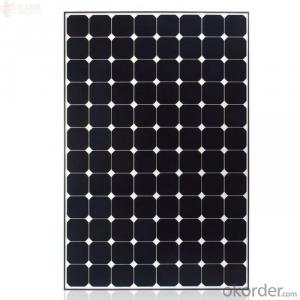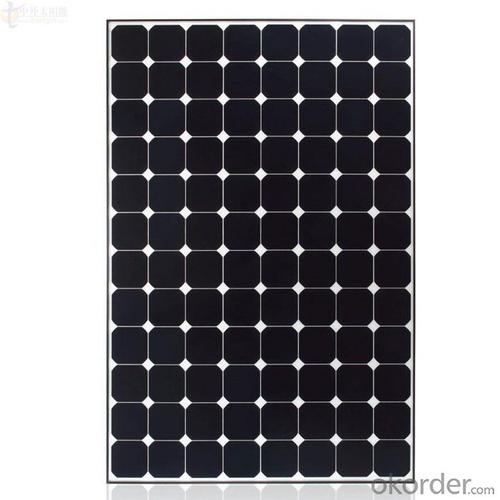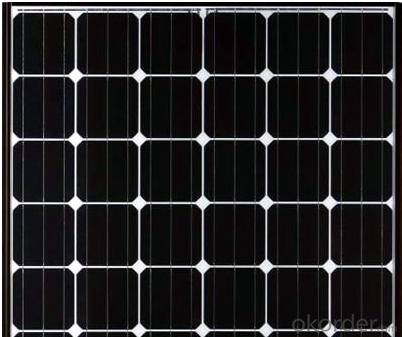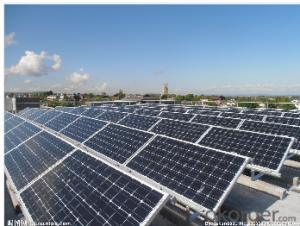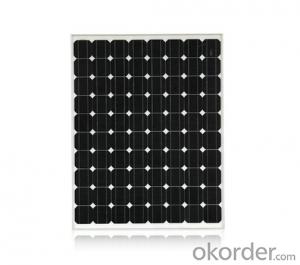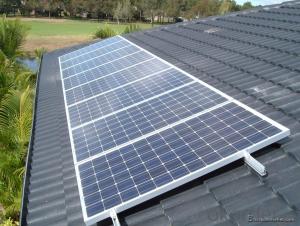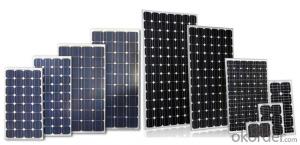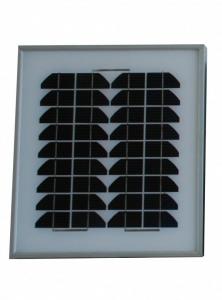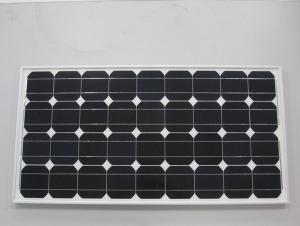Solar Panels in Phoenix - 295w CNBM Solar Monocrystalline Series V (295w—305w)
- Loading Port:
- China main port
- Payment Terms:
- TT OR LC
- Min Order Qty:
- 10000 watt
- Supply Capability:
- 500000 watt/month
OKorder Service Pledge
OKorder Financial Service
You Might Also Like
Specification
CNBM Solar Monocrystalline Series V (280W—290W)
Characteristics
| Max Power Voltage Vmp(V) | 34.7 | 35 | 35.5 | |
| Max Power Current Imp(A) | 8.51 | 8.58 | 8.65 | |
| Open Circuit Voltage Voc(V) | 41 | 41.3 | 41.7 | |
| Short Circuit Current Isc(A) | 9.25 | 9.3 | 9.35 | |
| Max Power Pm(W) | 295 | 300 | 305 | |
Temperature Coefficient of Cells
| NOCT | 45℃±2℃ | |||
| Temperature Coefficients of Isc (%/℃) | - 0.039 | |||
| Temperature Coefficients of Voc (%/℃) | –0.31 | |||
| Temperature Coefficients of Pmp (%/℃) | –0.42 | |||
Mechanical Data
| Dimension | 1954 x 982 x 45 mm | |||
| Weight | 27.5kg | |||
| No. of Cells and Connections | 72 (6 x 12) | |||
| Tolerance | –0.42 | |||
| Cell Monocrystalline Cell | 156 x 156 mm | |||
| Packing | 528 Pcs/40ft(H) Container | |||
Limits
| Operating Temperature | –40 °C to +85°C | |||
| Storage Temperature | –40 °C to +85°C | |||
| Max System Voltage | 1000VDC(IEC) / 600VDC(UL) | |||
IV Curve
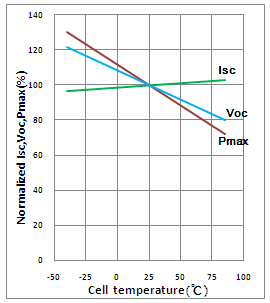
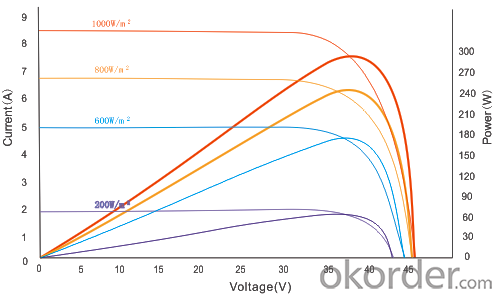
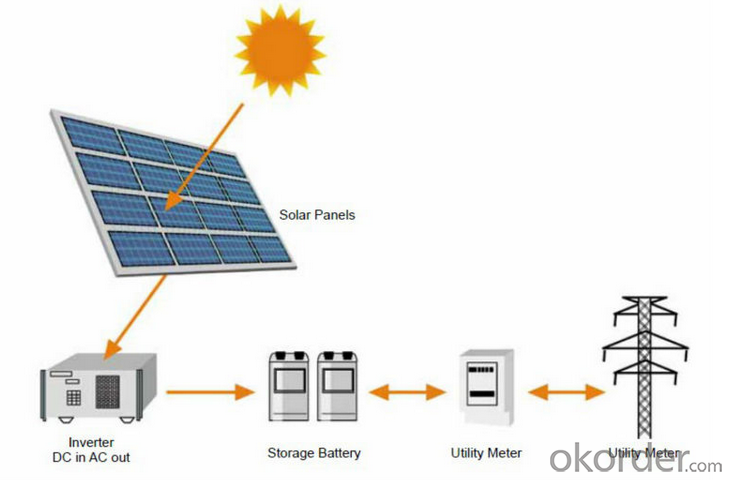
Image
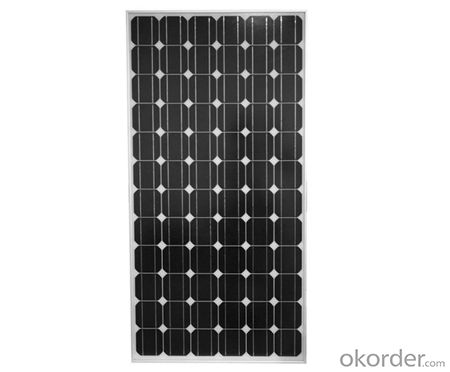
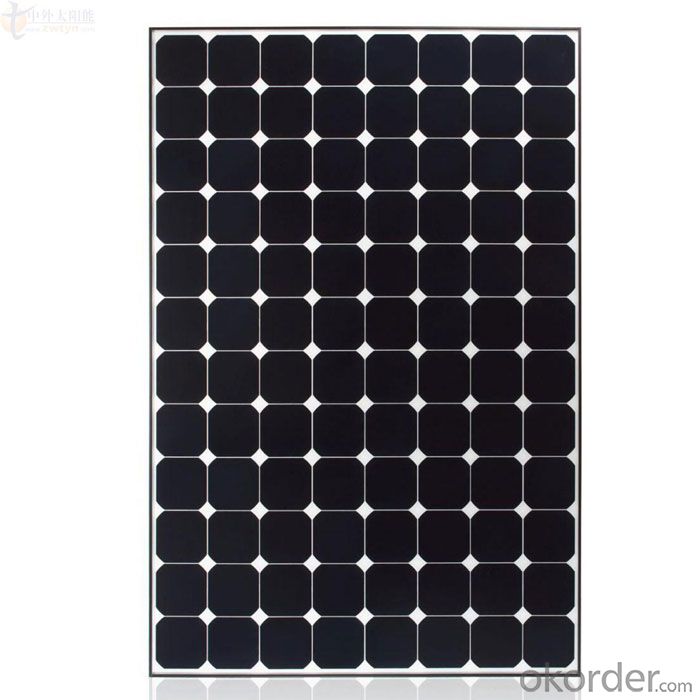
Guarantees
Products Guarantee 12 yrs free from defects in materials and workmanship
Performance Guarantee No less than 90% within 10yrs and no less than 80% within 25yrs
Certificates TUV (IEC61215&IEC61730), VDE(IEC61215&IEC61730), UL, CE
FAQ
1. Q: Do you have your own factory?
A: Yes, we have. Our factory located in Jiangsu province.
2. Q: How can I visit your factory?
A: Before you take off from your country, please let us know. We will show you the way, or arrange time to pick you up if possible.
3. Q: Do you provide free sample?
A: Usually we do not offer free sample
4. Q: Could you print our company LOGO on the nameplate and package?
A: Yes, we can do that.
- Q: What is the payback period for solar panels?
- The payback period for solar panels refers to the time it takes for the savings from reduced energy bills to equal the initial investment in installing the solar panels. The payback period can vary depending on factors such as the cost of the panels, the amount of sunlight in the location, and the local electricity rates. On average, the payback period for solar panels is around 5 to 10 years, but it can be shorter or longer depending on these factors.
- Q: Where can I find updated info about solar panels for home?
- It depends on what type of solar panels you are looking for. PV panels for electricity or heating panels for hot water. For more info about hot water heating panels, check out my source.
- Q: Please tell me what they are made of and how the materials help the solar cell produce electricity. Im doing a science projects so i need help on knowing all this info. Its a debate, so i need correct information please.I will please need more information about the bad things about solar energy and solar panels. Please say what solar panels do to create pollution or do anything that is not friendly to the environment. If you want just give me a website. Thank you
- A okorder /, or resistance—vary when light is incident upon it) which, when exposed to light, can generate and support an electric current without being attached to any external voltage source, but do require an external load for power consumption.
- Q: Can I add more solar panel let say up to 200 watt and adding two 2 volts battery using the same charges controller and power inverter?
- If you put a black panel on the ground or on your house and don't connect it to anything, it will absorb solar energy (heat) during daylight and release it at night (radiation). Not exactly. Assuming the black panel establishes an equilibrium temperature, it's going to be losing exactly as much heat as it's receiving during the day. Some will radiate out into space, some will conduct or convect into the atmosphere. As a wild guess, maybe 50/50. If you hook up a solar panel in the same place but hook it up to batteries, charge the batteries during sunlight hours and using that energy to electrically heat the home at night. The panels will absorb solar energy during the day but will convert that to electrical energy in the batteries instead of radiating it back into space at night. The panels are only about 4% efficient, so it's the same situation as the pure black panel for 86% of the energy. The remaining 4% will get stored in the batteries and then converted to heat at night. That heat will eventually leak out of the house and warm up the Earth a tiny bit. I think it's much the same situation either way. With the black panel the energy gets radiated / conducted/convected right away. With the solar panel a small percentage is stored and not so much is radiated, mostly conducted and convected. You're partly right as a black panel is going to radiate more into space than a house. But you're taking about maybe some day about 4% of % of the differening radiation/convection/conduction fraction, of the Earth's surface area. Probably not significant.
- Q: If you need 9400 watts, 75 amps@ 240V, how many solar PV panels do you need?
- 75 amps @ 240 volts equals 8 kW not 9.4 kW, so first you have to make up your mind how much you want. Then you have to decide what size of solar panel you want. If it helps, the 6 units on our roof, each approximately m square, are rated for 4 kW in bright sunshine.
- Q: I know what they do and how they work, but at this point they're expensive, don't always produce enough electricity as needed, and can't be used when there's no sun, as in half the day. Wouldn't wind power seem so more efficient? Or if they do use solar panels, how about putting them in the desert. But I really believe that research money should go to fusion generators since that's the future and the answer to our problems. Which is best in your opinion?
- There is not a yes or no answer. But for the majority of the population it is a definite no. Because the energy needed to make a solar panel is more than the energy that a solar panel can return in its life time. so No for cities and urbanized areas because there is already existing infrastructure therefore you'll be wasting more energy getting them installed. And it is better and more efficient to have the more common energy sources for populated areas. However that being said it would be more efficient if you live in a remote area as it would not be worth it to build a huge electricity grid just to power one small house in the middle of no where.
- Q: Can solar panels power an electric car?
- Yes, solar panels can power an electric car. Solar panels generate electricity from sunlight, which can be used to charge the batteries of electric cars. This allows the car to run on clean, renewable energy, reducing the reliance on fossil fuels and providing a sustainable transportation solution.
- Q: Can solar panels be installed on a remote island or location?
- Yes, solar panels can be installed on a remote island or location. Solar panels are a flexible and sustainable energy solution that can function independently of the grid, making them suitable for remote areas. They can generate electricity by harnessing sunlight, which is abundant in most locations, including islands. Additionally, advancements in solar technology have made it possible to install panels in challenging environments, such as extreme temperatures or harsh weather conditions.
- Q: Can solar panels be installed in areas prone to hurricanes or tornadoes?
- Yes, solar panels can be installed in areas prone to hurricanes or tornadoes. However, it is important to design and install the solar panel system with the specific weather conditions in mind. This includes using appropriate mounting systems, ensuring proper anchoring and reinforcement of the panels, and using high-quality materials that can withstand strong winds. Additionally, regular maintenance and inspections should be conducted to ensure the panels remain in optimal condition.
- Q: What is the most efficient solar panel, how many would we need to power the United States, and how much land would it take?
- well the main problem is that the the solar panels are ineffecent due to their 5 lays(that is what i hunrd they are useing in Gemrnay). Also if i remember right we are at a 20% conversion rate on solor panels. their is 2 problems with solar panels. the weather they drom in effeceny everytime the a cloud get in the way of the sun. what are u doing to do when it gets dusk time? tho neucler power is a good idea. it is only good for the Base load not for the peek power times... IE; Quiting time when everyone gets home and flips on the AC. The best thing really would be Geothormal, nucluer, wind and some solor. but that is for the west out word.. the south is still SOL. So they would need bio fules, better coal plants and fuel cells. (witch is where i am going to start working on here soon )
Send your message to us
Solar Panels in Phoenix - 295w CNBM Solar Monocrystalline Series V (295w—305w)
- Loading Port:
- China main port
- Payment Terms:
- TT OR LC
- Min Order Qty:
- 10000 watt
- Supply Capability:
- 500000 watt/month
OKorder Service Pledge
OKorder Financial Service
Similar products
Hot products
Hot Searches
Related keywords
